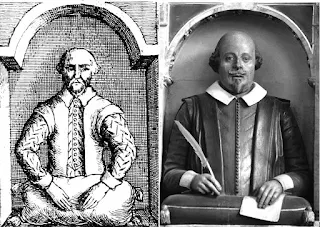Knolles as a supposed pseudonym
Why Richard Knolles’s English "translation" of Jean Bodin’s preface does not correspond to the original
Richard Knolles’s English version of Jean Bodin’s preface bears little or no resemblance to Bodin’s original French dedication or preface in his Six Livres de la République (1576).
The Original French Preface (1576)
Bodin's original preface is a formal dedication to Monsieur du Faur, a French royal councillor. It is rich in political, philosophical, and theological content. Bodin introduces his concept of sovereignty, criticizes political misreadings (especially those of Machiavelli), and presents his vision of a godly and orderly commonwealth.
A typical idea from Bodin might be paraphrased as:
“The prince must rule his subjects in imitation of God’s wisdom…”
This preface is deeply intellectual and programmatic—it sets the tone for a comprehensive political philosophy grounded in divine order, natural law, and humanist learning.
Knolles’s English Preface (1606)
Knolles published his English version in 1606 under the title:
The Six Bookes of a Commonweale.
However, his “translation” of the preface is entirely different in tone, structure, and content. Instead of faithfully rendering Bodin’s philosophical reflections, Knolles presents:
A translator’s apology (justifying his own work),
A praise of Bodin as a great learned man,
And a description of the challenges of translating such a work from both Latin and French.
There is no reference to Machiavelli(!). , no theological framework, and no explicit articulation of Bodin’s political agenda.
Side-by-Side Comparison (Simplified)
| Theme or Element | Bodin (French Original) | Knolles (English “Preface”) |
|---|---|---|
| Addressee | Monsieur du Faur (a real French statesman) | The English reader, in general |
| Tone | Formal, intellectual, personal dedication | Detached, generic, apologetic |
| Political Content | Strongly programmatic; opposition to Machiavelli | Largely absent or softened |
| Religious Viewpoint | Emphasis on divine law, natural order | Minimized or removed |
| Function | Outlines Bodin’s theory of sovereignty | Explains Knolles’s reasons for translating |
| Self-Presentation | Bodin as political thinker and reformer | Knolles as faithful translator and learned mediator |
Why is there such a stark difference?
Several key factors seem to explain this major divergence:
➤ Translation Conventions of the Time
In the early 17th century, translation was not understood as it is today. Translators often saw themselves as adapters, mediators, and improvers, not merely conveyors of the original text. Freely reworking or omitting sections was not considered dishonest but rather necessary adaptation.
➤ Political Sensitivity
Bodin was a French Catholic with ideas that could appear dangerously radical or too continental in Jacobean England. Knolles, working under English censorship, may have omitted or reshaped politically delicate ideas to fit the context of an Anglican monarchy wary of foreign models of sovereignty.
➤ Religious Differences
Bodin’s frequent appeals to divine providence and his philosophical theology might have raised alarms in England. Knolles likely toned down or removed these references to avoid offending religious sensibilities or political authorities.
➤ Knolles's Self-Positioning
Rather than stepping aside to let Bodin speak, Knolles used the preface to elevate himself as a learned Englishman capable of handling a dense French/Latin text. The preface becomes a stage for Knolles’s own voice, not Bodin’s.
A Specific Example (Reconstructed)
Let’s compare a reconstructed idea from Bodin with how it would appear (or disappear) in Knolles:
Bodin (in French):
"As God governs the world with wisdom and justice, so must the prince govern his commonwealth..."
Knolles (English preface):
"Having long observed the worth of Monsieur Bodin’s labors in the Commonwealth, I thought it not unfitting to make these available to English readers…”
This isn’t a mistranslation—it’s a complete redirection of purpose.
What Can We Conclude?
This discrepancy is not simply a mistake or an oversight—it reflects
The pressure of political and religious context
The desire of translators like Knolles to frame the work in terms accessible and acceptable to their own audience
In short: Knolles did not translate Bodin’s preface. He replaced its.










